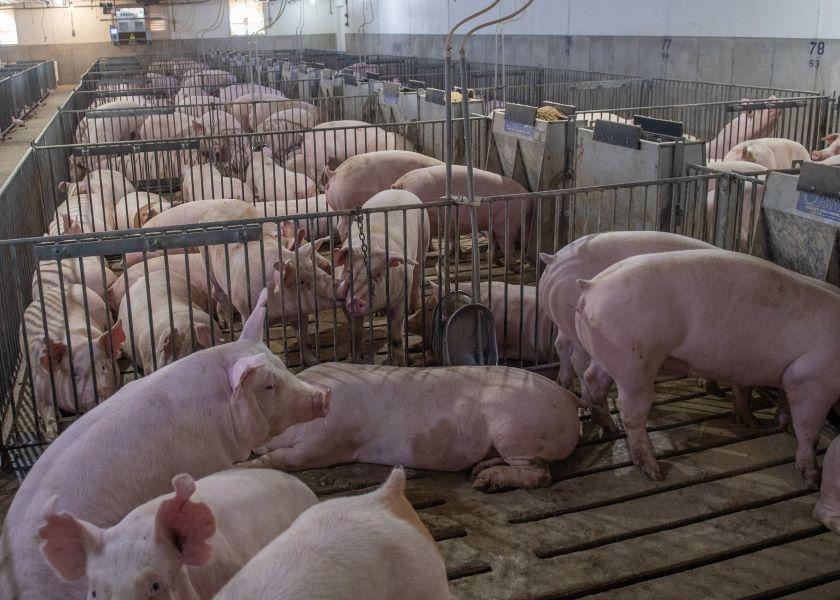What's the Difference in Value Between Barrows and Gilts?

By Pat Melgares, K-State Research and Extension news service
A Kansas State University post-doctoral student has taken a detailed look at how pigs are fed and managed in the United States to help swine producers understand where they might ultimately improve their profits.
Jamil Faccin reviewed 34 studies spanning 22 years and 16,000 pigs to determine differences in growth rates and carcass characteristics between barrows (a castrated male pig) and gilts (a female that has not been bred).
What he found is eye-opening for the swine industry.
“Gilts are associated with 5.9% lower average daily gain, 11.4% lower average daily feed intake and 4.3% better feed efficiency compared to barrows,” said Faccin, who came to K-State from Brazil.
Further, he said that gilts typically have 11.7% less backfat, 15.2% less marbling, 2-3 points higher iodine value (a measure of fat quality) and 4.5% increased lean percentage.
Compared to barrows, “the reduced growth performance and carcass weight results in an estimated loss of $3.60 per gilt in live performance,” Faccin said.
Faccin and Jason Woodworth, a research professor in K-State’s Department of Animal Sciences and Industry, worked with Ohio State meat scientist Ben Bohrer to complete this project.
The researchers also reported an approximate loss of $5 associated with carcass and meat quality characteristics, which translates to the packer and consumer having a less desirable product from gilts compared to barrows, according to Woodworth.
Right now, the industry manages barrows and gilts similarly in the barn, and chooses to overlook the differences in growth performances between the two,” he said. “This work was done to figure out how much difference there is between barrows and gilts (and) if there are opportunities to feed or manage the two populations so that there is a better outcome at the end for the producer and the packer.
The bottom line, Woodworth adds, is “we’re giving up about $3.60 worth of opportunity by managing gilts the way we do today. And the carcass quality ends up being about $5 per gilt that we’re leaving on the table, relative to how barrows perform.”
Faccin said the industry expects that gilts and barrows will have some differences in growth performance, but perhaps never fully understood the value that is lost. His work could give producers a better sense of how much money they could invest to improve the growth performance of gilts -- and still make a profit.
“Now (producers) have the numbers,” Faccin said. “If you’re spending $2 to improve some part of your management (that makes up the $3.60 in loss), that’s good. If you don’t know what that value is, it’s tough as a producer to know how and what to improve.”
Faccin’s report also takes a look at numerous qualities associated with raising pigs that could be opportunities for improving management, including final body weight, sort loss, mortality, carcass composition, meat color, marbling and more.
The full report is available online from the K-State Department of Animal Sciences and Industry.
“What we’ve done with this work is we’ve dangled a carrot,” Woodworth said, “and now you’ll have people figuring out how to go grab the carrot and close some of that gap between barrows and gilts.”
Read More from Farm Journal's PORK:
How Tosh Farms Is Equipping an Unlikely Source of Employees In the Sow Barn
The Long-Run Impact of the Great Resignation
Sports Legend Joe Theismann Gets Real About Pork, Football and Goals







